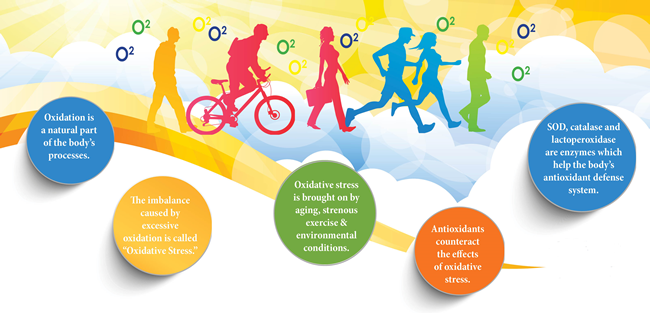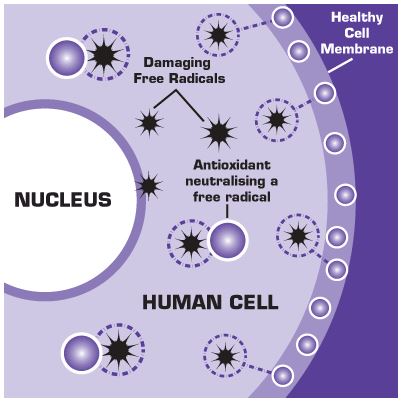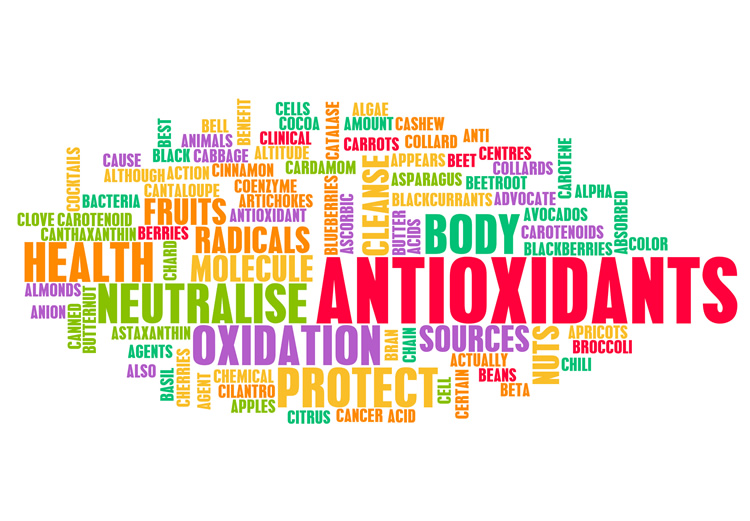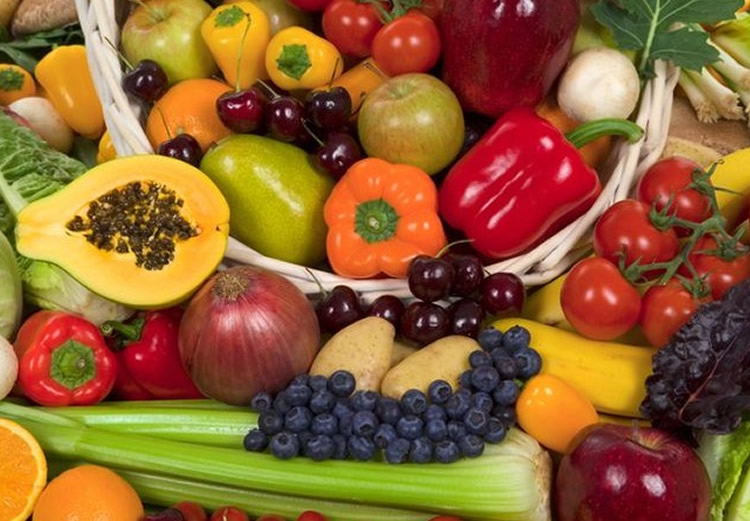
Health is a balancing act between:
Oxidants (e.g. Reactive Oxygen Species – ROS) and Anti-Oxidants.
- ROS are produced in the body in day-to-day life
- ROS can be directly introduced into the body
Whilst the term ‘reactive oxygen species’ might seem confusing and daunting it is actually quite easy to understand. Humans are aerobic organisms; this means that we use little organelles called mitochondria in order to provide energy to all of our cells. Within the mitochondria, a process takes place called respiration.
Put simply this process involves the inhalation of oxygen and exhalation of carbon dioxide. Now if you were to imagine oxygen you would picture two “O’s” floating around in space. During the process of respiration these two oxygen molecules are separated and therefore form ‘free radicals’ or ‘reactive oxygen species’. These reactive oxygen species are infact important in the body when produced as normal by products of metabolism and have many roles such as cell signaling and homeostasis.
In saying that, it is no secret that reactive oxygen species when produced in excess can do more harm than good. Things that can cause an increase of reactive oxygen species in the blood include stress, high fat- high carbohydrate diets, highly refined carbohydrate diets and cigarette smoking, just to name a few. You can see how all of these factors combined can alter the number of free radicals in the body so that they go from benefiting our health and wellbeing to causing a lot of harm.
Oxygen molecules are at their happiest when they are paired. Therefore, when they are split they will do anything in their power to pair up again. Imagine them as a ‘bitter ex’- having been split up from their partner and now seeking revenge on the body and potentially damaging tissues. This damage is known as oxidative stress and can contribute to health issues such as heart disease and cancer.
So, what can we do about all of these ‘bitter exes’ pulsing through our veins? One of the major ways we can reduce the excess of free radicals in the blood and therefore oxidative stress is through the consumption of antioxidants. Antioxidants can be imagined as an ‘A’ paired with an ‘O’, which means they have an oxygen molecule that they can donate to the single bitter guy. Antioxidant rich sources are your coloured plant foods. Think greens, reds, oranges, purples and yellows, eating a diet rich in plant foods and eating an array of different coloured vegetables is your best protection against oxidative damage! It is incredibly important to eat a diet based on whole, unprocessed, natural foods and this is one of the reasons why it is in fact so important. In particular, a crucial food item to incorporate into your diet daily is berries as they pack a powerful antioxidant punch.
Others ways you can limit oxidative damage in the body is by reducing or better yet, eliminating highly refined carbohydrates from your diet and also upping your intake of organic foods. Organic foods have higher levels of secondary nutrients that are crucial for providing antioxidant activity in the body (4).
To sum this all up in one sentence, decrease the quantity of pollutants you are exposed to and increase the plant content in your diet and the number of damaging bitter exes in your life will be greatly decreased!!

References:
- Balz, F. (1997). Reactive Oxygen Species and Antioxidant Vitamins. Oregon: Linus Pauling Institute.
- Assim, A., Alfadda, M., Sallam, P. (2012). Reactive Oxygen Species in Health and Disease. Journal of Biomedicine and Biotechnology, 45 (16) 30-44. doi:10.1155/2012/936486
- Brieger, K., Schiavone, S., Francis, J. (2012). Reactive oxygen species: from health to disease. Swiss Medical Weekly, 132 (12) 14-21.
- Devasagayam, T., Tilak J., Boloor K., Sane Ketaki S., Ghaskad, S., Lele, R. (2004). Free Radicals and Antioxidants in Human Health: Current Status and Future Prospects. Journal of Association of Physicians of India, 138 (52): 296-302.
- Williams et al. Flavonoids: antioxidants or signalling molecules? Free Radical Biology and Medicine. 2004.
- Arts et al. Polyphenols and disease risk in epidemiologic studies. The American Journal of Clinical Nutrition. 2005.
- Boffetta et al. Fruit and Vegetable Intake and Overall Cancer Risk in the European Prospective Investigation Into Cancer and Nutrition (EPIC). J Natl Cancer Inst. 2010
- http://www.holisticperformancenutrition.com/articles–media/reactive-oxygen-species-and-our-health










